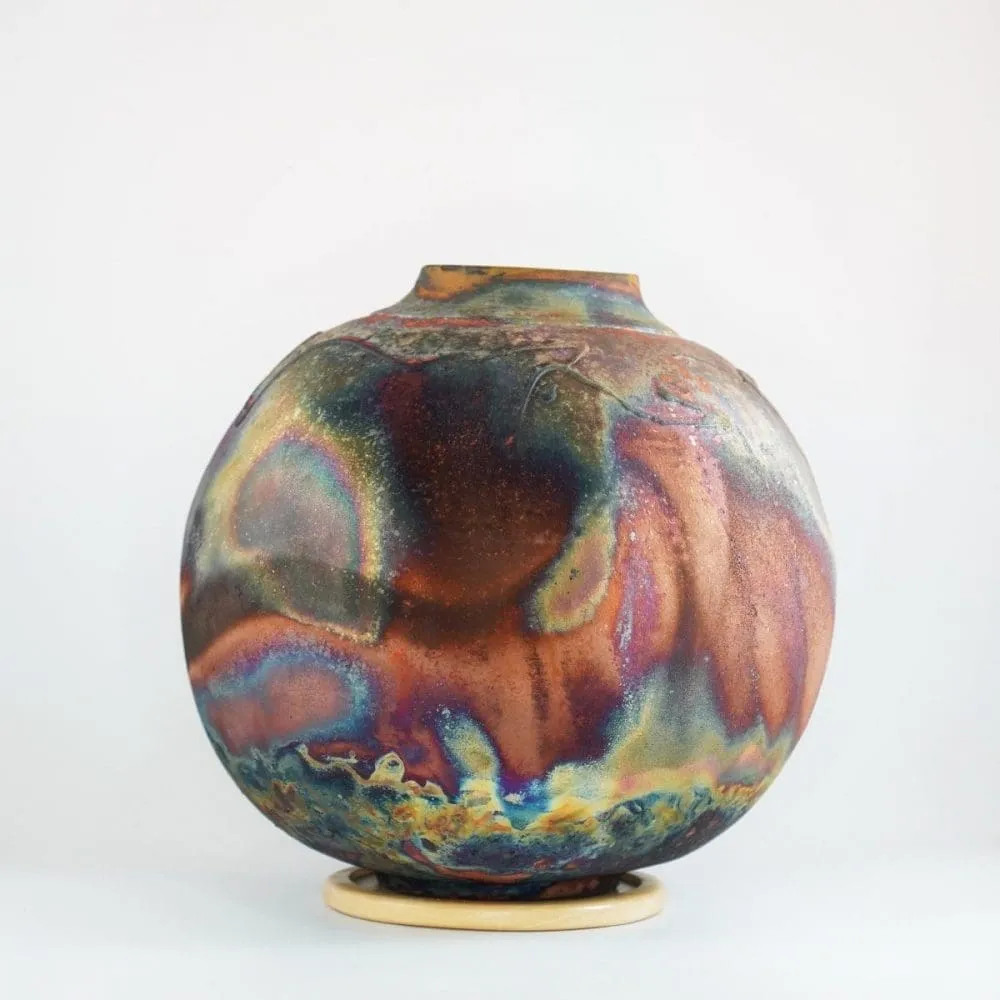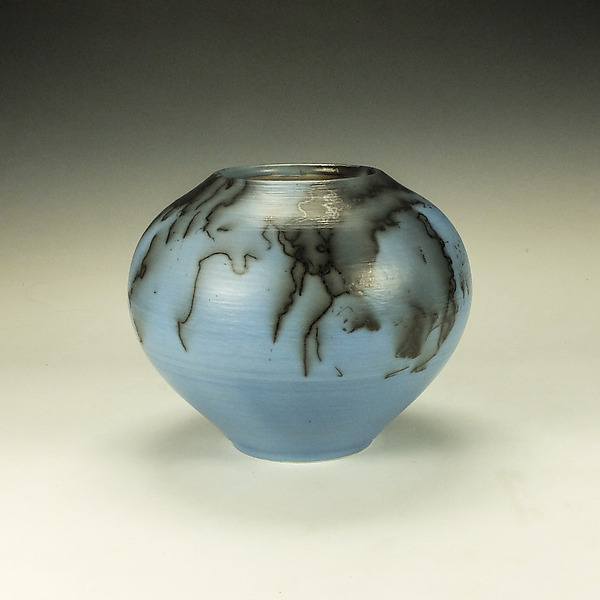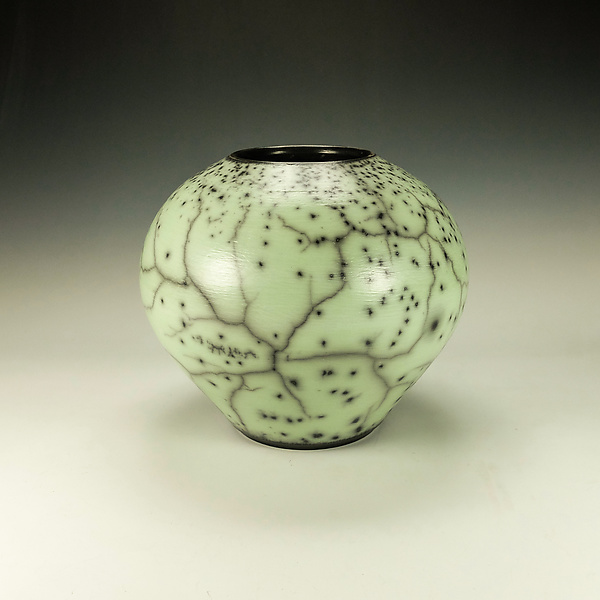Raku ceramics is a distinctive pottery technique with a rich history that dates back to 16th-century Japan. Known for its unique firing process, Raku offers an artistic expression that bridges traditional craftsmanship with modern aesthetics. The name “Raku” translates to “enjoyment” or “comfort,” reflecting the philosophy behind this pottery form. This article explores the fascinating journey of Raku ceramics, detailing its history, techniques, artistic applications, and the reasons for its enduring popularity.
The Historical Background of Raku
Origins in Japan
Raku ceramics originated in Japan during the late 16th century. The technique was inspired by the tea ceremony culture, which emphasized simplicity and natural beauty. Raku pots were initially created for tea ceremonies, embodying the spirit of Wabi-sabi, which celebrates imperfection and transience. The first Raku pottery was produced by a man named Chojiro, who became famous for crafting tea bowls.
The raku process was developed in conjunction with the aesthetics of the tea ceremony. Each piece was designed to be both functional and beautifully imperfect. The early Raku pottery was hand-shaped and primarily consisted of simple, unadorned forms that prioritized function in tea service. Over time, the techniques spread beyond the tea ceremony, leading to a wider variety of vessels and decorative styles.
Cultural Significance
Raku ceramics hold a special place in Japanese culture. They are often linked to Zen Buddhism, emphasizing mindfulness and the beauty of simplicity. The simplicity of Raku pottery encourages a certain appreciation for nature and craftsmanship, encouraging users to embrace the uniqueness of each piece.
In traditional settings, Raku bowls were used not only for drinking tea but also as objects of contemplation. The way the light interacted with the glaze and the imperfections of the clay served as reminders of life’s transient beauty. This cultural significance continues to resonate with modern artisans and collectors, elevating Raku ceramics to a revered art form.

The Raku Firing Process
Preparing the Clay
The journey of creating a Raku ceramic starts with selecting the appropriate clay. Raku clay is specifically formulated to withstand the thermal shock associated with the firing process. Unlike stoneware or earthenware clays, Raku clay typically has a higher grog content, which enhances its durability.
Once the clay is chosen, potters mold and shape it into the desired form. The shaping process can involve hand-throwing on a potter’s wheel or hand-building techniques. During this stage, artists may also incorporate texture or decorative elements directly onto the surface of the piece. After shaping, the clay vessels are dried to a leather-hard stage before being fired in a kiln.
The Raku Firing Process
The hallmark of Raku ceramics is its unique firing method. The process starts with the potter placing the glazed pieces in a preheated kiln, usually at around 1,800 to 2,200 degrees Fahrenheit (about 982 to 1,204 degrees Celsius). This high temperature allows for the glaze to melt and adhere to the clay body.
Once the desired temperature is reached, the pieces are removed from the kiln using long tongs. The immediate exposure to the air causes rapid cooling, creating a thermal shock that can lead to cracks. The artistic aspect of this process unfolds during the subsequent phase, where the pottery is placed in combustible materials such as sawdust, straw, or paper within a combustible container.
The Raku firing process not only produces distinct colors and textures but also introduces carbon to the unglazed areas of the pottery. This step enhances the intricacies of each piece, making no two Raku items identical. The unpredictability of the process is what excites many artists, as it ensures each piece has its own character and story.
Raku Glazes and Effects
Unique Glazing Techniques
Raku ceramics are known for their vibrant glazes, which are often characterized by metallic finishes and unusual patterns. Potters typically use specific Raku glazes that respond dramatically to the firing conditions. Common glazes include copper, iron, and various mineral-based formulations.
During the firing process, the glaze undergoes a chemical reaction that produces effects like crackling, iridescence, and color changes. By adjusting the ingredients and firing times, artisans can achieve distinct visual outcomes. The interaction between the glaze and the clay body also contributes to the overall aesthetic.
The Role of Reduction
Reduction is another critical factor in Raku glazes. When the heated pottery is placed in the combustible materials, a chemical reaction occurs. The oxygen is largely deprived in the container, resulting in a reduction atmosphere. This environment alters the glaze, leading to rich colors and metallic sheens.
This process can produce stunning effects. Raku pieces may reveal various colors ranging from blues and greens to deep reds and blacks. Many artists take pride in embracing the unpredictability of Raku glazes, as they yield unique results that cannot be replicated. This element of surprise is a significant part of what makes Raku ceramics so appealing.

Artistic Applications of Raku Ceramics
Functional and Decorative Pieces
Raku ceramics can serve both functional and decorative purposes. Traditionally used for tea ceremony implements, modern Raku pottery includes a wide array of items such as bowls, vases, and sculptures. Raku bowls may still be used for tea, but they are often displayed as art pieces due to their vibrant glazes and unique forms.
The versatility of Raku allows artists to experiment with various shapes and sizes. Many contemporary artists push the boundaries of traditional Raku forms, creating large sculptures or intricate wall pieces that challenge conventional notions of ceramics. The blend of technique and creativity results in works that resonate with both art collectors and casual observers.
Raku in Contemporary Art
In the art world, Raku ceramics have found their place among various contemporary movements. Artists embrace Raku due to its combination of ancient techniques and modern expressions. Many potters explore themes of nature, personal identity, and environmental issues through their Raku works.
Art exhibitions featuring Raku ceramics often highlight the craftsmanship and the stories behind each piece. The tactile nature of Raku pottery invites viewers to engage with the work, appreciating its aesthetic qualities and the artistry involved in the process. In this way, Raku clay art fosters connections between the artist, the viewer, and the material itself.
The Importance of Community in Raku Ceramics
Collaboration in Ceramics
The world of Raku ceramics often emphasizes collaboration and community. Many potters participate in workshops and communal firings, where they share techniques and insights. These gatherings foster creativity and allow artists to learn from one another.
Collaborative events can involve potters coming together to create pieces as a collective. This approach not only enhances skill-sharing but also builds a sense of camaraderie. The relationships forged in these environments enhance the overall experience of working with clay and Raku techniques.
Teaching and Learning
Many experienced Raku artists dedicate time to teaching new potters about the process. Workshops often include hands-on demonstrations, allowing students to engage with both the artistic and technical aspects of Raku. This mentorship is invaluable, providing insights into the intricacies of glaze choices, firing techniques, and design considerations.
As the tradition of Raku pottery continues, passing knowledge to the next generation ensures its preservation. This nurturing of craftsmanship promotes sustainability and maintains the relevance of Raku ceramics in contemporary art.

Challenges in Raku Ceramics
Technical Difficulties
While Raku ceramics offer unique artistic opportunities, the process comes with its own set of challenges. Achieving the desired results can require trial and error due to the unpredictable nature of firing and glazing. The sensitivity of the technique means that even small changes in temperature or materials can lead to varying outcomes.
Potters must also be cautious during the firing process, as handling hot pieces can pose safety risks. Proper tools and techniques are essential to prevent injuries. Mastering Raku requires patience, practice, and a willingness to learn from mistakes, making it a challenging yet rewarding endeavor.
Environmental Concerns
As interest in sustainability grows, many artists are becoming increasingly aware of the environmental implications of ceramics. Raku firing traditionally involves burning combustible materials, which can contribute to air pollution. Potters are now exploring eco-friendly alternatives and methods that reduce environmental impact while still producing beautiful pieces.
In addition, there is a movement among ceramicists to use sustainable materials and minimize waste in the studio. Addressing these concerns is crucial for future generations of artists while simultaneously preserving the essence of Raku ceramics. The combination of creativity and environmental awareness leads to innovative solutions within the craft.
The Enduring Allure of Raku Ceramics
In conclusion, Raku ceramics represent a unique journey from fire to finish, capturing the essence of creativity and tradition. The rich history, distinctive firing techniques, and captivating glazes contribute to the allure of this art form. From functional tea bowls to striking sculptural pieces, Raku ceramics offer something for both collectors and art enthusiasts.
Understanding the intricacies of the Raku process not only enhances appreciation for individual pieces but also fosters a deeper connection to the artistry and craftsmanship involved. The community surrounding Raku ceramics showcases the value of shared knowledge and collaboration, ensuring the techniques remain vibrant and relevant.
As artists continue to push the boundaries of Raku pottery, they effectively blend tradition with contemporary themes. The ever-evolving landscape of Raku ceramics invites new possibilities and artistic expressions, promising to inspire generations to come. Whether as a collector or a budding artist, engaging with Raku ceramics offers a unique experience that celebrates beauty, creativity, and the nuances of craftsmanship.